I went for three days without seeing the sun.
Not best practice in terms of health, but it tells you something about how busy I was at ReaderCon this past weekend.

Quick disclaimer: This is going to be a long post, as will be the part 2 follow-up. I’m trying to paint a clear picture of my experience to help others unfamiliar with ReaderCon decide whether or not to give it a try next year. That will take more than a few quick words.
What, you ask, is ReaderCon? Until last summer, I’d never heard of it. Then, one of my instructors in my MFA program suggested I attend. “It’s about the best Con in New England, and it’s local for you.”
So, I looked into it.
To quote from ReaderCon’s homepage:
“Readercon is the only small convention regularly attended by such giants of imaginative literature as Gene Wolfe, Samuel R. Delany, John Crowley, Barry N. Malzberg, Kit Reed, and Jonathan Lethem.
The program consists of two tracks each of panel discussions, author readings, and solo talks or discussion groups, plus kaffeeklatsches (intimate gatherings with an author) and autograph signings.
There is a large bookshop full of new, used, and rare and collectible books and magazines (and yet more great conversation; if a Readercon attendee is not at a program item, they’re probably here).”
This convention is all about the people!
 I met many authors (both established and aspiring) as well as avid readers, all of whom were open and friendly and willing to chat with me. You might remember from my post about Boskone that I sometimes have trouble engaging with folks in new and unfamiliar settings. That was not a problem this time around. That said, I did rig the game of talking to people slightly in my favor with judicious use of name tag add-ons.
I met many authors (both established and aspiring) as well as avid readers, all of whom were open and friendly and willing to chat with me. You might remember from my post about Boskone that I sometimes have trouble engaging with folks in new and unfamiliar settings. That was not a problem this time around. That said, I did rig the game of talking to people slightly in my favor with judicious use of name tag add-ons.
Without further ado, here’s what my four-day, three-night romp at ReaderCon looked like.
Thursday:
I checked into my hotel room at the Boston Marriott in Quincy at around 6:30 PM. First impressions of the hotel itself? Meh. I doubt folks are attending because of the fantastic rooms. The carpets were difficult to look at, the closets seemed designed to dissuade anyone from actually using them, and (oddly) the bathrooms lack any towel hooks. For whatever reason, that last detail really bothered me. Why, Marriott, do you have zero places for me to hang up a towel in the bathroom? Why?! That is, however, the limit of my complaints. The rest is all glowing praise.
Thursday night’s program kicked off at 8 PM with panel discussions that were free and open to the public. Despite that, attendance was sparse. Probably because it was a Thursday. The two panels I attended were:
1) Writers Who Edit, Editors Who Write

The panel consisted of Sabrina Vourvoulias, John Lawson, Scott Edelman, Mimi Mondal, and Mike Allen.
For an hour, these folks talked about the tricky task of balancing being an editor of others’ work and writing your own stuff.
“There’s a long history of writers who became editors and then stopped writing their own work.” – Scott Edelman
“My rule to keep me working on my owns stuff is this. Add three sentences to your own story every day no matter what.” – Mike Allen
“When we edit, we’re reshaping the bones of a story. When we write, we’re creating the bones from scratch.” – Sabrina Vourvoulis
“I’ve had people tell me to stop writing and just be an editor because I was so good at editing.” – Mimi Mondal
“As a writer, I feel inspired by the submissions that come across my desk. I learn a lot from both the good and bad pieces that I edit.” – John Lawson.
The advice that stuck with me most came from Scott Edelman, however. He said, “Learn how to say no!” His comment was in reference to taking on editing projects, but I think it’s useful to writers who don’t edit, too, because there is always going to be someone asking you to do something for them.
2) Fabric Goods in Fantasy Settings
The panel consisted of Victoria Janssen, Natalie Luhrs, Sarah Smith, Tom Greene, and Elaine Isaak.
 The discussion centered around the economics of producing the clothes that characters wear in fantasy and science fiction stories. Consensus? Few authors drop any references into their worlds of the supply chains involved or the various professions involved (other than, perhaps, tailors and blacksmiths). What’s missing? Where are all the animals providing the leather? Where are the fields of cotton or flax? Where are the silkworm farms? And, where are the people who tend the animals, tan the leather, gather the cotton, process the flax into linen, harvest the silken threads, or dye the woven cloth? (I’m looking at you George R. R. Martin, famous describer of every single character’s outfit to the last button).
The discussion centered around the economics of producing the clothes that characters wear in fantasy and science fiction stories. Consensus? Few authors drop any references into their worlds of the supply chains involved or the various professions involved (other than, perhaps, tailors and blacksmiths). What’s missing? Where are all the animals providing the leather? Where are the fields of cotton or flax? Where are the silkworm farms? And, where are the people who tend the animals, tan the leather, gather the cotton, process the flax into linen, harvest the silken threads, or dye the woven cloth? (I’m looking at you George R. R. Martin, famous describer of every single character’s outfit to the last button).
By the time 10 PM rolled around, I was happy but tired, so instead of hitting up the BarCon — a term I became familiar with this weekend –, I went to bed. It was the earliest I would manage for the rest of the convention.
Friday:
I popped out of bed bright and early at 6:30, showered, dressed, then loaded up on breakfast in the hotel restaurant. As a chronically light eater, I opted not to go for the buffet. Given the price, I would have had to be a bottomless pit to make it financially feasible, so I ordered from the regular menu. It must be noted that the hotel restaurant is quite expensive, but there was a hotel shuttle ferrying folks to and from the redline T-stop every half hour. If I’d wanted to, I could have headed into Boston and found better food for less money. But it was my first time at ReaderCon, and I didn’t know how it worked. I didn’t want to risk missing out on anything significant, so I stayed inside the hotel (hence the three days without actual sunlight touching my skin).
First Name Drop:
On my way out from breakfast, I stopped at the Starbucks at the hotel bar to grab some caffeine. A man was waiting to be seated who looked familiar to me.
He’s an author, I thought. I’ve seen him before. I should talk to him!

Boskone is the only other place I could have seen this gent, so I asked him if he’d been on any of the panels. Why, yes, he had. I offered a hand to shake and introduced myself. Imagine my surprise and delight to find myself shaking hands with Mr. Kenneth Schneyer, prestigious and prolific author of many excellent speculative and science fiction short stories (and a few novels). Turns outs, he’s not just a great writer but also a great human being. It came out in the quick exchange that I was pretty new to writing conferences. Ken went out of his way for the rest of ReaderCon to smile and say hello and talk to me whenever he saw me. He wasn’t the only one, either. I’m telling you, ReaderCon was terrific!!
Getting Registered:
I wandered back to the registration table and queued up to officially register and get my name badge. There were two options for how one could wear the plastic badge–either clipped to your clothing or dangling from a thin black lanyard around your neck.
Interlude: A Rant about Placement of Name Badges
Take this piece of advice to heart. Do NOT go for the lanyard option, and here’s why. Someone sees you from across the way. You look like an interesting person. They would like to meet you, say hello, learn your name, chat you up, hear your thoughts on books and writing and life. They swallow their nerves and approach you. The natural instinct is to check your name badge, but oops–to do that, they have to break polite eye contact and allow their gaze to drift down your torso to your midriff where your name badge is dangling. Awkward. Worse, there’s a 50/50 chance that the plastic card is flipped around backward and they have raked their eyes up and down your body for no reason at all. Twice as awkward!!
Please, use the clip option, and affix your name high up near your shoulder. Easy peasy fresh and breezy and no awkward body-gazing needed. End of interlude.
 ReaderCon had an ingenious name badge add-on option available. You could write anything (within reason) you wanted on fabric tags that could then be securely adhered to the bottom of your badge. I saw lots of folks using them as a chance to clarify preferred gender pronouns (thank you so much to folks who did that, by the way).
ReaderCon had an ingenious name badge add-on option available. You could write anything (within reason) you wanted on fabric tags that could then be securely adhered to the bottom of your badge. I saw lots of folks using them as a chance to clarify preferred gender pronouns (thank you so much to folks who did that, by the way).
I chose to use my add-ons as a way to invite people to talk to me, and to give them a conversation starter as an “in.” It worked quite well.
Kaffeeklatsches!
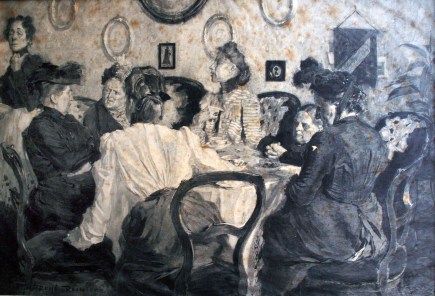 At the sage advice of a volunteer manning the registration table Thursday night, I wandered over to where the Kaffeeklatsch sign-up book lay at around 9:45 AM, fifteen minutes before sign-up officially opened. Good thing I did, too. There was already a line of folks forming, and people were already filling up the slots with their names.
At the sage advice of a volunteer manning the registration table Thursday night, I wandered over to where the Kaffeeklatsch sign-up book lay at around 9:45 AM, fifteen minutes before sign-up officially opened. Good thing I did, too. There was already a line of folks forming, and people were already filling up the slots with their names.
If you don’t know what a kaffeeklatsch is, fear not. I didn’t know either until Boskone when I missed all of them because I didn’t realize you had to sign up for them in advance. Hence my 9:45 AM appearance at the sign-up table. A kaffeeklatsch is a small, intimate affair in which an author (or editor, or agent) sits down with ten to fifteen folks and spends an hour shooting the breeze, talking about whatever people want to talk about.
I thought I would sit quietly at the tables and let others ask their questions and share their thoughts. After all, this was my first time attending these things. Best to sit back, watch, and learn. That didn’t happen. The authors were too friendly, too engaging. So were all the other folks at the table. The conversations were lively, and I quickly found myself sucked in, laughing and chatting away with everyone else. So great!
Here’s the list of folks who I got to meet and talk with via the Kaffeeklatsches at ReaderCon:
1) Nicholas Kauffman
Horror writer extraordinaire and a super nice guy. I pre-ordered his upcoming new book “100 Fathoms Below” within 20 minutes of his klatsch ending. The pitch that sold it for me? Disabled American submarine in Soviet waters with a vampire on board. Yup. That’s for me. Thank you!
2) James Morrow
Okay, I signed up but didn’t attend. One of the problems I had at ReaderCon was having no free time to feed myself. By the time this klatsch was starting up, my hands were starting to shake, and I was feeling panicky from hunger. I had to eat. Sorry, Mr. Morrow. I’ll try to catch you next time. Your book, The Asylum of Dr. Caligari, is fantastic, by the way.
3) Ken Liu and Anatoly Belilovsky
The conference room in which the kaffeeklatsches happened accommodated two groups at a time, divided by a mobile wall. Ken and Anatoly’s klatsches were scheduled for the same time slot. Because they knew each other and did similar stuff regarding translating Chinese (in Ken’s case) and Russian (in Anatoly’s case) fiction to English, they opted to break down the dividing wall and combine their klatsches. I found the ensuing conversations about balancing their own writing with the job of translating others’ works to be fascinating. I also enjoyed listening to Ken and Anatoly discuss the many nuanced elements that go into translating literature from one language to another.
My mind kept returning to the two versions of Ovid’s Metamorphosis that I and my beloved own. It’s the same story, but the two translations (we sat and read the story of Apollo and Daphne back and forth to each other one morning) created different tones and different points of thematic emphasis.
4) Max Gladstone
I love, love, LOVE Max’s Craft Sequence books, and so I was very excited to sit in a room with this man and bask in his presence. That’s all I wanted to do. However, Max’s klatsch happened immediately after the “Bureaucracy in Fantasy” panel. More than half of us in Max’s klatsch (including Max) had attended the panel, and Max had asked the last question fielded before the man with the bright red “STOP!” sign ended things. So, Max’s kaffeeklatsch turned into an extended discussion of bureaucratic systems both in the real work (in China, specifically) and in fantasy settings. It was great!
5) Victoria Janssen
Why, you might be asking yourself, would I sign up for this kaffeeklatsch? After all, I’m a self-proclaimed YA and MG writer. Victoria writes adult erotica! Well, the YA novel I’m working on at the moment takes place in a secondary world in which women are the unapologetically dominant gender. That means my characters have never experienced male-induced body-shaming or sexual-stigmatization. They are fully realized and fully confident sexual beings. Sex is not shied away from in this world I’ve created. It is openly discussed, and even more openly practiced. Yet, as I pointed out, it’s a YA novel. I’m walking a narrow and tricky line here. How do I write sex scenes that are 1) well-done and 2) strike the right balance of on-page/off-page references so that this manuscript doesn’t get kicked back to me with a “thanks but a little too edgy” comment in the rejection email I get from every YA agent I sub it to? This was my chance to sit down with a woman who knows how to write sex scenes in their many iterations and ask my questions. The conversation was, as you might guess, both stimulating and enlightening. I’m so glad to have met Victoria and to have had a chance to benefit from her experience and insights.
6) Navah Wolfe
A chance to sit down with the senior editor at Saga Press?! Yes, please. Let me sit and be showered with insider tips and suggestions for the SFF publishing industry. Which, by the way, is exactly what happened. Plus, I received an impromptu education into the joys of Eurovision. Didn’t even know that was a thing!
Navah talked faster than an auctioneer after her third espresso, and her energy and enthusiasm was infectious. I don’t know how old Navah is, but she looked too young to be a senior editor. After spending an hour with her, however, I realized that she’s got the advantage of youth on her side because her job (and her clear love of and commitment to it) sounds exhausting.
That’s it for the kaffeeklatsches. I spent the rest of my time at ReaderCon attending panel discussions, chatting with friendly folks at the bar and at the after-parties up on the eighth floor of the hotel.
Friday Panels:
Every time slot was quadruple-booked with interesting panel discussions. If only I had Hermione’s time turner, I could have gone to every panel that sounded interesting (all of them). Alas, I had to pick and choose. Here are the one’s I sat in on.
On Dislike – Between Meh and Rage
 The panel consisted of KJ Kabza, Lauren Roy, Graham Sleight, J.R. Dawson, and Auston Habershaw.
The panel consisted of KJ Kabza, Lauren Roy, Graham Sleight, J.R. Dawson, and Auston Habershaw.
Take-away from this discussion? Life is short. If a book isn’t hooking you for good or ill, dump it and move on.
The Bureaucracy of Fantasy
The panel consisted of Victoria Sandbrook, Ken Schneyer, Phenderson Djèlí Clark, John Wiswell, and Alex Jablokow.
Of course, the Ministry of Magic was brought up and discussed at length. I get it. Harry Potter is practically universal; most of us who are fans of fantasy and science fiction have read it. But… there are so many other interesting examples that could have been mentioned. I still can’t believe no one brought up the movie Brazil!!
Feminist Socialism in Fantastika
The panel consisted of Veronica Schanoes, Tamara Vardomskaya, and Marissa Lingen.
Wow. In the best possible way, wow. These three women knew so much about the topics of socialism in literature, feminism in literature, and the combination of the two in literature. I was blown away. Humbled, really. I added about ten books and authors to my TBR list.
Friday Night Fun
 The final events of Friday were purely social in nature. At 9:00 PM ReaderCon hosted a “Meet the Prose Party” in which participating panelists printed witty one-offs from one of their published works on sticky mailing labels and walked around a big ballroom with them in hand. The idea? Folks like me could walk up to someone carrying printed labels and ask for one. It gave us shy people a way to engage with authors when we might otherwise not.
The final events of Friday were purely social in nature. At 9:00 PM ReaderCon hosted a “Meet the Prose Party” in which participating panelists printed witty one-offs from one of their published works on sticky mailing labels and walked around a big ballroom with them in hand. The idea? Folks like me could walk up to someone carrying printed labels and ask for one. It gave us shy people a way to engage with authors when we might otherwise not.
Also, there was a bar at the back of the ballroom. I do not often partake of the alcoholic beverages, but a beer gave my hands something to hold onto, and the ethanol settled my nerves. Win-win.
The mailing label thing worked like a charm, too. By the end of it, I had both sleeves of my shirt lined with snippets from over twenty published authors, and each time I requested one, I read it and asked the giver to tell me more about the work from which it came. Hooray for socializing!!
At 10:30 PM, music started playing, and the 80’s/90’s themed dance began. I had my 80’s outfit ready to go up in my hotel room but never went up to put it on. Too much fun being had to pause for a costume change. By 11:30 PM, most folks had either called it a night or headed off for other, smaller parties elsewhere. A natural night owl I am not, so I climbed into bed at 11:45 PM, read for about two minutes and crashed.
I still had all of Saturday and the half-day schedule on Sunday ahead of me, but by the end of Friday I’d gotten my money’s worth from ReaderCon. You can check out the rest of my adventure in My ReaderCon 2018 Experience–Part 2 (coming soon). You’ll want to read all about my second name-dropping moment, which also happened in the hotel restaurant over breakfast (involving Samuel Delaney). In the meantime, you can check out my Instagram for pic’s from this year’s ReaderCon29.
Are you a writing convention enthusiast? Which Cons have you attended? Any you’d like to recommend to the rest of us newbies? Do share in the comments!
Thanks for dropping by and as always, happy writing to you.
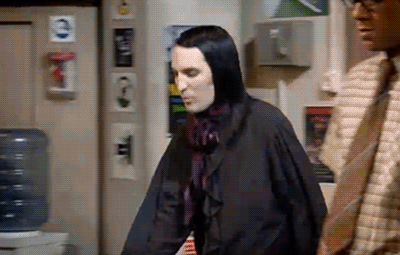
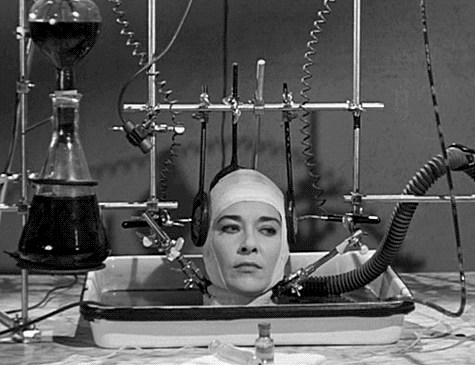

 These are the nerve cells that stimulate our muscles when we kick, jump, or swing a bat. They originate in a region in our brain called the
These are the nerve cells that stimulate our muscles when we kick, jump, or swing a bat. They originate in a region in our brain called the 




 Firstly, don’t call me babe. Secondly, Facebook is a false community. So are all the thousands of other online communities that exist for writers, several of which I am a member and enjoy. The
Firstly, don’t call me babe. Secondly, Facebook is a false community. So are all the thousands of other online communities that exist for writers, several of which I am a member and enjoy. The  I did it. I graduated. I am a creative writing “master,” which is a little weird to write. The title “novice” would probably be more accurate. But, two days out from having received my handshake and diploma (not really, just a certificate. The diploma will arrive in the mail a month from now), I am feeling most grateful for the people I met and the relationships I forged. If anyone ever questions my choice to pay for a masters in creative writing, citing the fact that I could have learned “all that stuff” from craft books and YouTube, I will simply smile at them and give them a pacifying nod. I will never regret my choice to do this because if I hadn’t attended Lesley, I would probably never have met and become close friends with the people I did. And isn’t that what life is all about? The people we meet? The relationships we form? The communities we build? It is for me.
I did it. I graduated. I am a creative writing “master,” which is a little weird to write. The title “novice” would probably be more accurate. But, two days out from having received my handshake and diploma (not really, just a certificate. The diploma will arrive in the mail a month from now), I am feeling most grateful for the people I met and the relationships I forged. If anyone ever questions my choice to pay for a masters in creative writing, citing the fact that I could have learned “all that stuff” from craft books and YouTube, I will simply smile at them and give them a pacifying nod. I will never regret my choice to do this because if I hadn’t attended Lesley, I would probably never have met and become close friends with the people I did. And isn’t that what life is all about? The people we meet? The relationships we form? The communities we build? It is for me.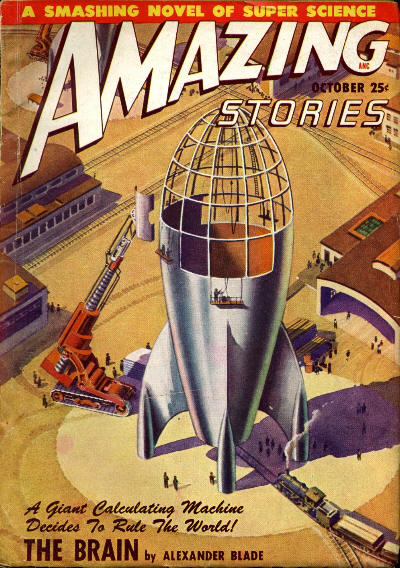
 It’s true! From an evolutionary standpoint, the brain is an organ with a singular purpose. To keep us alive. An essential part of “not dying” is noticing any kind of change to the current situation.
It’s true! From an evolutionary standpoint, the brain is an organ with a singular purpose. To keep us alive. An essential part of “not dying” is noticing any kind of change to the current situation.


 For example, while I managed to get a copy of Ghost Talkers signed by
For example, while I managed to get a copy of Ghost Talkers signed by  Then there was
Then there was  Not this time, I am telling myself without much confidence. This time, I will have done it once before. I won’t be a complete newb. I will be able to approach and interact with other people at the conference because I will remember that it is a writing conference. Everyone in attendance will have a love of books and writing in common with me. I will smile, just like last time, but then I will make my feet move, and I will approach people, and I will say “hello” and other normal things. I will not go mute and resort to hiding behind giant plants in lobbies and watching authors from great distances.
Not this time, I am telling myself without much confidence. This time, I will have done it once before. I won’t be a complete newb. I will be able to approach and interact with other people at the conference because I will remember that it is a writing conference. Everyone in attendance will have a love of books and writing in common with me. I will smile, just like last time, but then I will make my feet move, and I will approach people, and I will say “hello” and other normal things. I will not go mute and resort to hiding behind giant plants in lobbies and watching authors from great distances.


 A book’s title is critically important. It’s on the cover. Part of the “hook.” It helps a potential reader make that all-important snap-judgment decision to investigate further or pass over a book on the shelf for something better. I know that. But, I also recognize that an agent and/or an editor will be far more skilled at coming up with a title than I ever will be. If I pick a stinker of a title for a great story, and that story gets scooped up by an agent and sold to a publishing house with editors and marketers and publicists, someone, somewhere is going to notice the terrible title. Someone (with far more skill and expertise that I) will almost certainly come up with a knock-my-socks-off dazzling replacement that I would never have thought of.
A book’s title is critically important. It’s on the cover. Part of the “hook.” It helps a potential reader make that all-important snap-judgment decision to investigate further or pass over a book on the shelf for something better. I know that. But, I also recognize that an agent and/or an editor will be far more skilled at coming up with a title than I ever will be. If I pick a stinker of a title for a great story, and that story gets scooped up by an agent and sold to a publishing house with editors and marketers and publicists, someone, somewhere is going to notice the terrible title. Someone (with far more skill and expertise that I) will almost certainly come up with a knock-my-socks-off dazzling replacement that I would never have thought of.
 Sibilance is also an important consideration when choosing a name for a character. Lyricism can’t be underestimated. It’s what I tend to focus most on. Does the name have a pleasing sound? The flow of consonants and vowels, soft or hard stops embedded within a name, which syllable carries the emphasis all affect the emotional centers of the brain.
Sibilance is also an important consideration when choosing a name for a character. Lyricism can’t be underestimated. It’s what I tend to focus most on. Does the name have a pleasing sound? The flow of consonants and vowels, soft or hard stops embedded within a name, which syllable carries the emphasis all affect the emotional centers of the brain. I’ll give you an example. Consider these two names: Daphne, and Korinn. Physically, who is the taller, more athletic character? Who is more emotionally sensitive? Can you tell what gender the two characters are? With Daphne, that’s a classically female name, but what about Korinn? I made it up. It’s gender ambiguous but carries psychologically masculine overtones because of the hard “K” sound, and the long (powerful) ō, which also carries the syllabic emphasis, that rolls into that “r” sound. R’s sound animalistic. The sounds of the two names are already impacting your pre-conceived ideas about the characters.
I’ll give you an example. Consider these two names: Daphne, and Korinn. Physically, who is the taller, more athletic character? Who is more emotionally sensitive? Can you tell what gender the two characters are? With Daphne, that’s a classically female name, but what about Korinn? I made it up. It’s gender ambiguous but carries psychologically masculine overtones because of the hard “K” sound, and the long (powerful) ō, which also carries the syllabic emphasis, that rolls into that “r” sound. R’s sound animalistic. The sounds of the two names are already impacting your pre-conceived ideas about the characters.
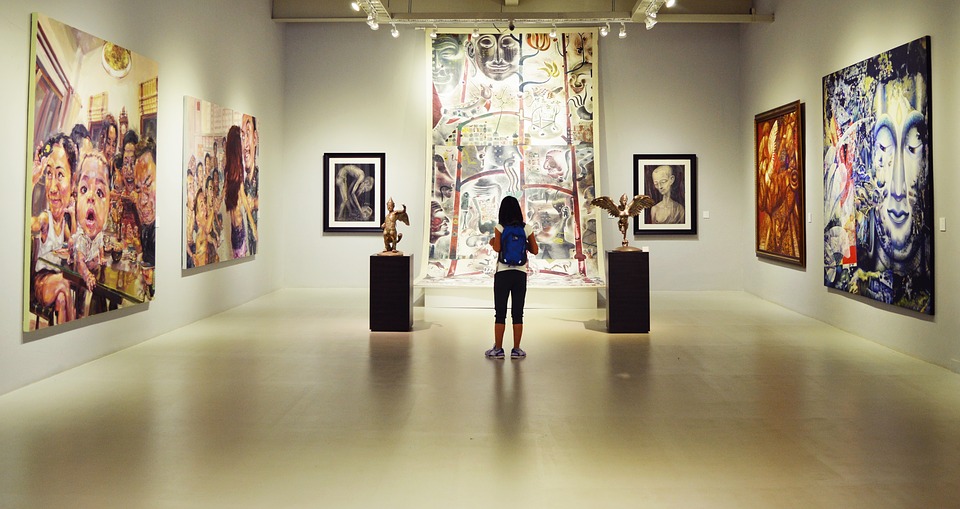
 Whether you’re a composer, a painter, a poet, or a novelist the act of creation uses energy. Literally. It also uses neurotransmitters. If you’re continually working on your art, you’re activating and reactivating the same neural networks in your brain again and again. The cells of those neural networks talk to each other via chemicals that are manufactured at night while you sleep. Over time, you can deplete your store of neurotransmitter by using them faster than you can make them.
Whether you’re a composer, a painter, a poet, or a novelist the act of creation uses energy. Literally. It also uses neurotransmitters. If you’re continually working on your art, you’re activating and reactivating the same neural networks in your brain again and again. The cells of those neural networks talk to each other via chemicals that are manufactured at night while you sleep. Over time, you can deplete your store of neurotransmitter by using them faster than you can make them.
















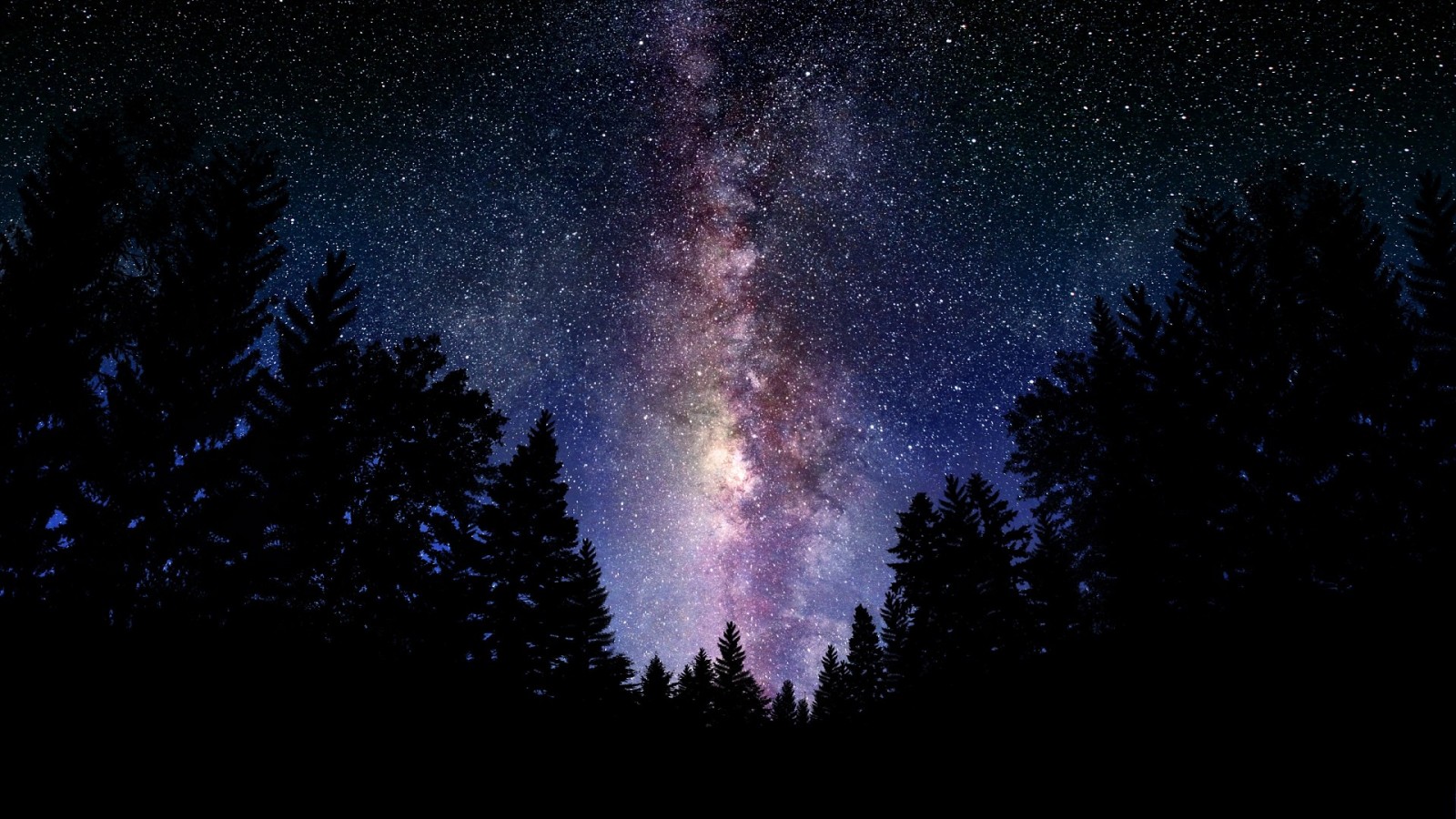
 I own a book called “
I own a book called “ The writing process for grad school is interesting, especially during the thesis semester. Most students enter their final semester with a first draft of their thesis already written. They’ll spend four months revising it before submitting it. They’re traveling a well-worn path by that point.
The writing process for grad school is interesting, especially during the thesis semester. Most students enter their final semester with a first draft of their thesis already written. They’ll spend four months revising it before submitting it. They’re traveling a well-worn path by that point.




 I can see again. Maybe I don’t have to die out here all alone in the cold, unforgiving forest of my mind. The book I’m writing is my destination once again. Chris Lynch had been my shelter. A few close writing-friends I’ve connected with through the program had been my water, my spouse is my fire, and all the fine books I’d been reading this semester have been my food.
I can see again. Maybe I don’t have to die out here all alone in the cold, unforgiving forest of my mind. The book I’m writing is my destination once again. Chris Lynch had been my shelter. A few close writing-friends I’ve connected with through the program had been my water, my spouse is my fire, and all the fine books I’d been reading this semester have been my food.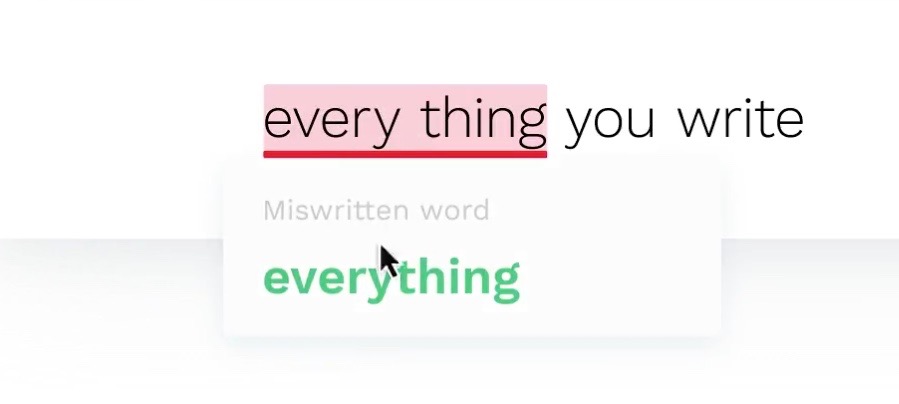



 When you start a new document in Grammarly, you can select which features are or aren’t active. You can also help the algorithm edit to your needs by telling it what type of document it’s analyzing.
When you start a new document in Grammarly, you can select which features are or aren’t active. You can also help the algorithm edit to your needs by telling it what type of document it’s analyzing.

 This month’s
This month’s 